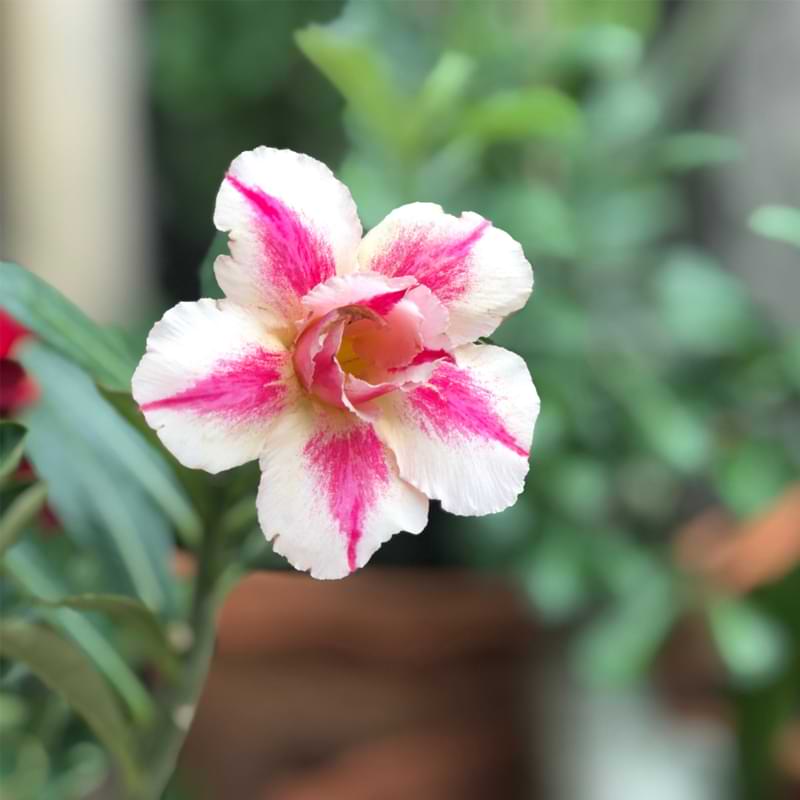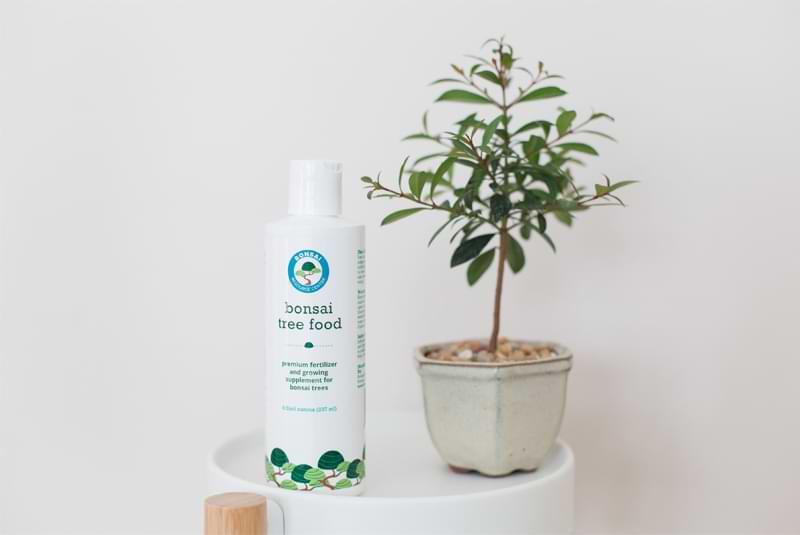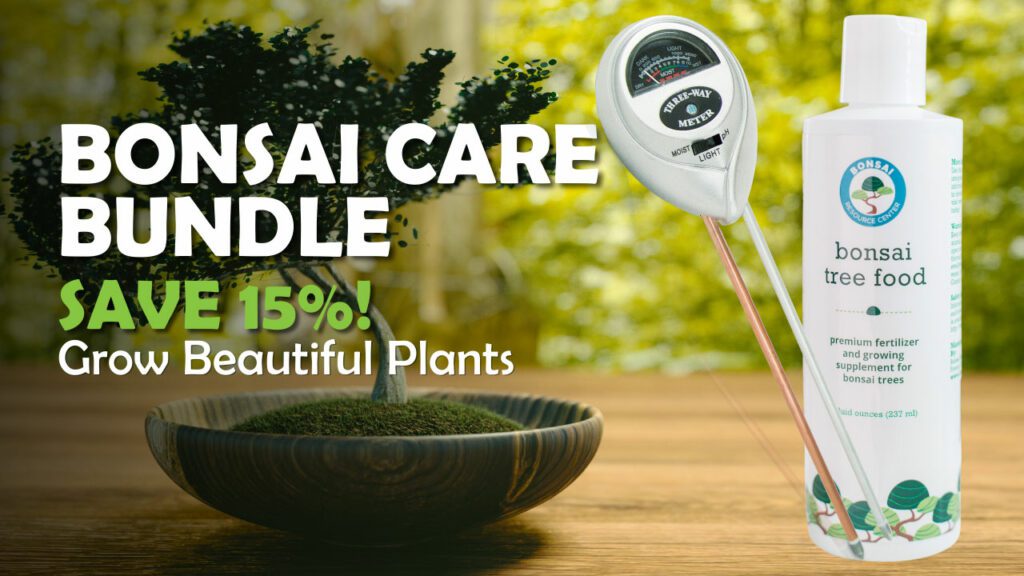The Desert Rose Bonsai is a stunning tree that is sure to catch your eye. With its striking blooms and unusual trunk shape, it has become a popular choice for bonsai enthusiasts worldwide. However, like any other bonsai tree, proper care is essential for ensuring its health and longevity.
Identifying Desert Rose Bonsai
Identifying a Desert Rose Bonsai is relatively easy, thanks to its unique appearance. First, the Desert Rose Bonsai has a thick and swollen trunk that tapers towards the top. The bark of the plant is usually grey or brown with vertical cracks running up and down it.
The leaves of this tree are fleshy, glossy green, and oval-shaped with pointed tips. They grow in clusters at the end of branches and can be as large as 2-3 inches long. During periods of drought or stress, this plant can lose its leaves.
It’s also easy to identify by its flowers. The Desert Rose Bonsai produces beautiful flowers throughout the year when grown under suitable conditions. These blooms come in various shades ranging from pink to red to white depending on species. There are usually five petals per flower, and most varieties have an ombré pattern, with the darker color on the outside of each petal.

Desert Rose Bonsai Care
Desert Rose Bonsai Care is an essential aspect of maintaining the health and beauty of your tree. Proper care ensures that the plant thrives in its environment, producing vibrant blooms and foliage.
Watering
These plants are known for their ability to store water in their thick trunks and roots, which means they can survive periods of drought. However, this does not mean that they do not need regular watering.
To determine when your Desert Rose Bonsai needs watering, check the moisture level of the soil with a moisture meter or by sticking a finger about an inch deep into the soil. If it feels dry at that depth, then it’s time to water.
When you water your plant, make sure to give it enough water so that excess runs out through the drainage holes at the bottom of the pot. This will help ensure that all parts of the root system get adequate moisture. An easier way to water your plant is by bottom-watering, where you fill a bowl or sink with water and simply place your tree’s container directly in the water. Simply let it sit in the water for half an hour or so, and it will “drink” up as much water as it needs. After 30 minutes, pull it out of the water and allow the excess water to drain out before putting the pot back in its normal spot.
Light Requirements
Light is a crucial factor in the growth and development of Desert Rose Bonsai. These plants require bright but indirect sunlight for at least 6 hours per day to thrive. Direct sunlight can scorch their leaves, so it’s best to place them near a sunny window with sheer curtains or in an area where they receive filtered light.
If you’re growing your Desert Rose Bonsai indoors, consider using artificial grow lights that mimic natural daylight cycles. This will ensure that your bonsai receives adequate light throughout the year.
Keep in mind that during the winter months, when daylight hours are shorter, you may need to supplement your plant’s lighting needs with additional artificial light sources regardless of where your plant usually lives.
On the other hand, too little light can cause poor growth and even death of your Desert Rose Bonsai. If you notice yellowing leaves or stunted growth, it could be a sign that your plant isn’t getting enough light. In this case, move it closer to a window or add more artificial lights as needed.
Soil Type
Desert roses prefer well-draining soil that won’t hold too much moisture, as they are susceptible to root rot. If you prefer to make your own potting mix, a good mix consists of equal parts perlite, coarse sand or grit, and a well-draining soil base. This combination will provide excellent drainage while allowing the roots to breathe.
It’s important to avoid using heavy potting soil or garden soils as these tend to retain too much moisture which can lead to fungal issues.
When repotting your desert rose bonsai, it’s best to remove all old soil from around the roots before placing it in fresh soil. This allows for better nutrient absorption and promotes healthy growth.
Temperature and Humidity
Desert Rose Bonsai requires a warm and semi-humid climate, making it a perfect indoor plant. The ideal temperature for this bonsai is between 60°F to 90°F, but it can tolerate temperatures as low as 40°F. It’s important to protect the bonsai from freezing during winter by keeping it indoors.
Humidity is also an essential factor in Desert Rose Bonsai care. It prefers dry air with humidity levels of around 30% to 50%. High humidity can cause fungal diseases while low humidity can lead to leaf drop or brown edges on leaves. To increase the humidity level, you can place a humidity tray filled with water near the plant or use a humidifier.
Where you place your Desert Rose Bonsai in your home also affects its temperature and humidity needs. If placed near windows or doors that are frequently opened, it may experience fluctuations in temperature and exposure to drafts that can make it more difficult for your tree to thrive.

Fertilizing
The Desert Rose Bonsai requires a balanced nutrient supply to thrive and grow healthily. However, it is crucial to note that over-fertilization can be detrimental to its growth.
Using an every day plant food that is formulated specifically for bonsai trees will give your plant everything it needs to grow. Remember to always follow instructions on the packaging when applying fertilizers or plant food.
Common Pests and Diseases
One of the most common challenges that Desert Rose Bonsai growers face is dealing with pests and diseases. These can be caused by various factors such as changes in temperature, humidity levels, improper watering, or poor soil quality. Therefore, it’s essential to keep an eye on your plant’s health to prevent any damage.
Some of the most common pests that can affect Desert Rose Bonsai include:
- Spider mites: These are tiny, white insects that create webs all over your plant. If you notice a lot of webs on the leaves and stems, you likely have a spider mite infestation.
- Mealybugs: Mealybugs are small white insects that appear fuzzy and they can quickly infest your houseplants, moving from one plant to another.
- Scale: There are many different types of scale, and all of them are harmful to your houseplants.
- Fungus gnats: These insects thrive in damp environments where they are more likely to find fungus to feed on. They can even lay their eggs in the plant’s soil, making them harder to detect and get rid of. They are the small black insects you may see flying around your plant when you are watering them.
To control these pests effectively, use insecticidal soap or neem oil spray regularly. Additionally, you can wipe them off using a damp cloth or cotton swab dipped in alcohol.
Some of the most common diseases that can affect your Desert Rose Bonsai include:
- Root rot: Root rot happens when the tree’s roots are overburdened with too much water, which doesn’t allow them to breathe properly. When roots aren’t able to get enough oxygen, they begin to rot, and can no longer provide the plant with nutrients from the soil.
- Powdery mildew: Powdery mildew usually occurs when the plant’s environment is not right. Either there’s too much humidity around the plant, not enough light, or not enough air flow. This causes mildew to grow on the leaves and stems, and can significantly affect your tree if not treated quickly.
- Chlorosis: This happens when your tree isn’t getting enough nutrients from the soil. The lacking nutrients makes it so the tree doesn’t have the energy it needs to produce those beautiful green leaves.
The best way to prevent and treat diseases in your plant is by staying on top of their care. A healthy plant is usually able to fight off disease before outward signs of that disease even develop. You may need to use fungicides or root supplements to help your tree through a disease it is fighting.
How To Bonsai Desert Rose
The art of growing Bonsai trees is fairly easy to start. To bonsai a Desert Rose tree, make sure you are first starting with a healthy plant. Research where you are getting the tree from before purchasing to ensure they are a reputable bonsai tree supplier. Once you have your Desert Rose tree, all you’ll need to do is style and train your tree for it to look like a traditional bonsai tree.
Styling
Decide on the shape and size you want for your bonsai. You can choose from several styles including formal upright, informal upright, slanting, cascading or semi-cascade.
Styling your tree is fairly easy to do. Remember that young trees will benefit from small, frequent styling as opposed to trying to move a new branch to sweep in a completely different way while it’s still green. This will prevent shock and allow your tree to adjust more quickly to the direction you’re asking it to grow in.
When styling your desert rose bonsai, remember to take your time and work on one section at a time. Be patient with yourself as you learn what works best for your tree’s unique characteristics and shape.
Training
The next step in creating a beautiful Desert Rose Bonsai is training it to grow in the desired direction. You will need to use wire to gently bend branches into place without breaking them. When wiring, choose a wire gauge that can hold the branch firmly in place without causing damage or leaving marks on the bark. Begin at the base of the trunk and wrap a single wire around each branch or twig, bending it into position gently. Be cautious not to over-bend or break them.
Another method for training your desert rose bonsai is through pruning. Pruning ensures that only desirable branches are allowed to grow while removing unwanted ones. It also stimulates new growth in areas where there aren’t any.
It’s important to note that when pruning or wiring your Desert Rose Bonsai, take care not to do so during its dormant season as this could cause stress leading up to spring awakening.
Through proper training techniques like wiring and pruning, you can create stunning shapes and forms with your Desert Rose Bonsai!
FAQ Desert Rose Bonsai
Can I grow desert rose bonsai from seed?
Growing Desert Rose Bonsai from seeds is absolutely possible, and it is a rewarding experience for horticulture enthusiasts. Although it takes time and patience, growing your own bonsai tree from scratch allows you to witness the entire process of growth and development.
Is desert rose bonsai poisonous?
While the sap from Desert Roses can cause skin irritation or allergic reactions in some people or pets if ingested in large quantities – they are not toxic. Just remember to always handle your plants with care, regardless of if they are known to be toxic or not.
Bonsai With Us!
The Bonsai Resource Center is here to help you learn how to grow bonsai and provide you with the tools you need to keep your tree healthy and strong. Explore our other articles, visit our online shop, and connect with other bonsai lovers in our Facebook group to learn everything you need to know about this rewarding hobby!
More Bonsai Tree Care Resources
The Best Bonsai Tree Benefits for Your Body and Soul



